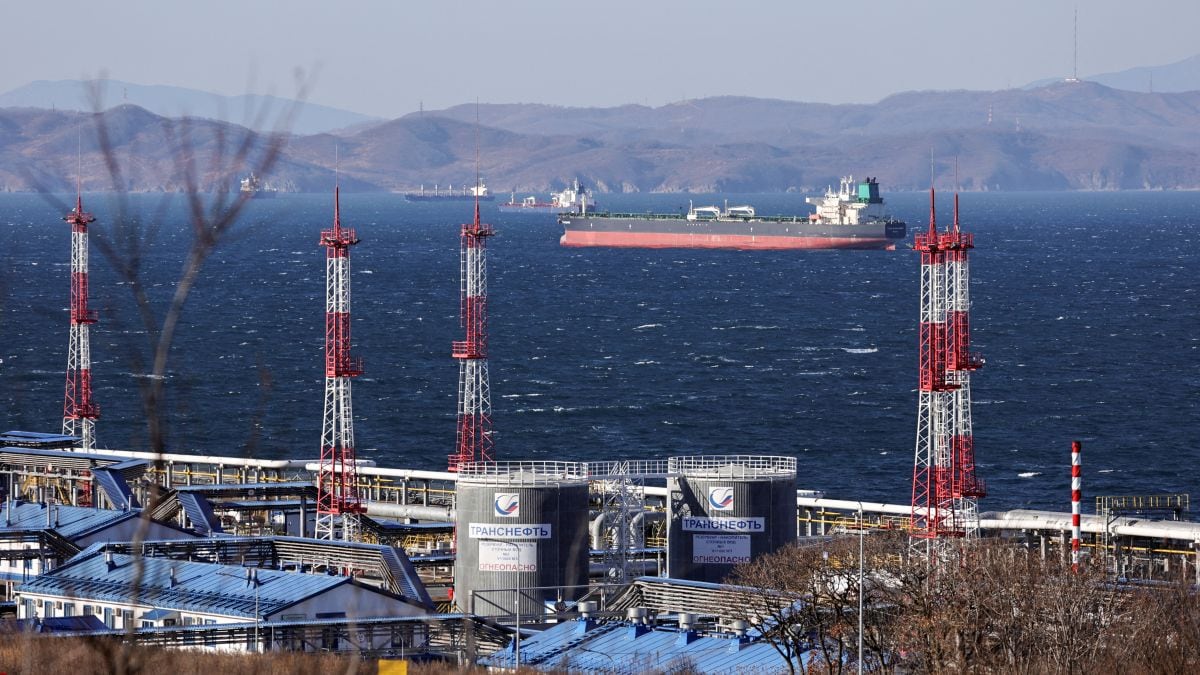

India's crude oil import bill could surge by an estimated $14 billion following a potential cessation of Russian oil imports. This projection arises from a confluence of factors, including increasing pressure from the United States and the European Union, which are aimed at reducing Moscow's energy revenues amidst the ongoing war in Ukraine.
India, the world's third-largest oil importer, has significantly increased its reliance on Russian crude since the beginning of the Russia-Ukraine conflict in February 2022. Prior to the conflict, Russia accounted for a negligible portion of India's oil imports, but this figure rose dramatically to around 35-40%. In the fiscal year 2024-25, oil imports from Russia stood at 87.4 million tonnes, constituting approximately 36% of India's total oil imports of 244 million tonnes. This reliance has made Russia India's top oil supplier, surpassing traditional suppliers like Iraq and Saudi Arabia. In June 2025, Russian crude accounted for a massive 43.2% of India's total oil imports.
However, this dependence has drawn scrutiny, particularly from the US, with President Trump announcing a 25% tariff on Indian goods and a potential "penalty" for purchasing Russian oil. This move, coupled with the EU's efforts to tighten restrictions on Moscow's energy revenue, has put pressure on Indian refiners. The EU's latest sanctions package includes measures targeting a Russian-linked Indian refiner, lowering the price cap on Russian oil, and banning imports of petroleum products made from Russian crude.
In response to these developments, Indian state-run refiners have reportedly paused new purchases of Russian oil, signaling a potential shift in India's oil import strategy. These refiners, including Indian Oil Corp, Hindustan Petroleum Corp, Bharat Petroleum Corp, and Mangalore Refinery Petrochemical Ltd, have not acquired Russian crude in the last week. This pause is attributed to narrowing price discounts on Russian crude and renewed threats from the US to impose punitive tariffs on countries buying oil from Moscow. With discounts at their lowest since 2022, the economic rationale for importing from Moscow has weakened.
If India is compelled to reduce or halt its imports of Russian oil, the country will likely need to diversify its sourcing, primarily turning to its traditional West Asian suppliers like Iraq, Saudi Arabia, and the United Arab Emirates. India is also expected to sustain its diversification efforts by tapping additional crude oil volumes from Africa, Latin America, and the US. However, this shift could increase import costs by a few dollars a barrel.
According to ICRA, a $10 per barrel increase in crude oil prices would increase India's oil import bill by approximately $13-14 billion. Furthermore, domestic gas and LNG imports linked to dated Brent prices would also become more expensive, impacting gas consumers across various sectors. Kpler estimates that India's annual crude import bill could rise by $9-11 billion, assuming a $5/bbl differential on 1.8 million barrels per day of displaced volumes if Russian crude becomes inaccessible.
Despite the potential increase in costs, some analysts believe that India is equipped to absorb the cost of shifting from Russian to U.S. crude oil if sanctions hit. They argue that India can manage the shift without a significant impact on inflation. However, concerns remain about the potential impact on refining margins and the overall economy.
The situation remains dynamic, with Indian refiners closely monitoring developments and seeking clarity from the government. The coming weeks will be crucial in determining how India navigates this complex energy landscape and what measures it takes to ensure its energy security while managing the potential economic consequences.